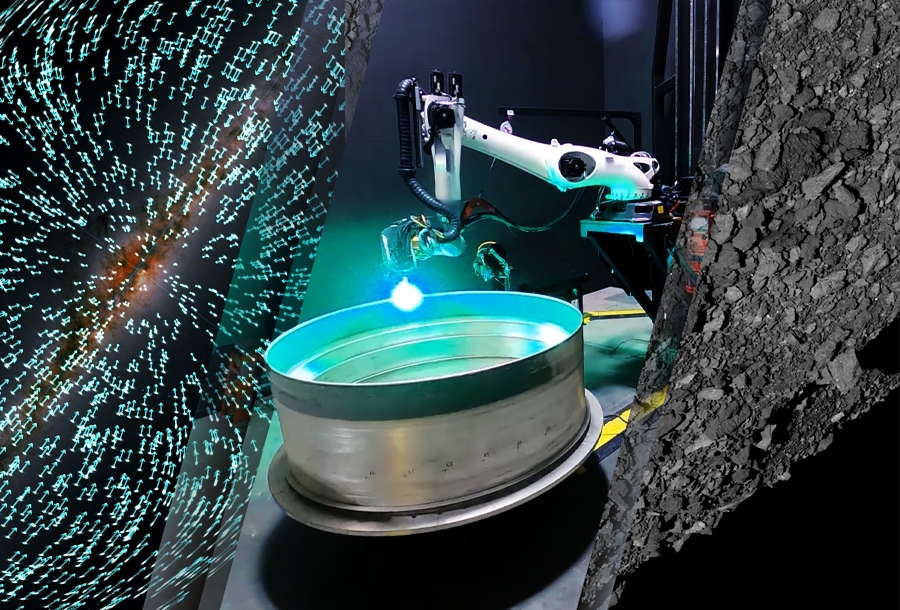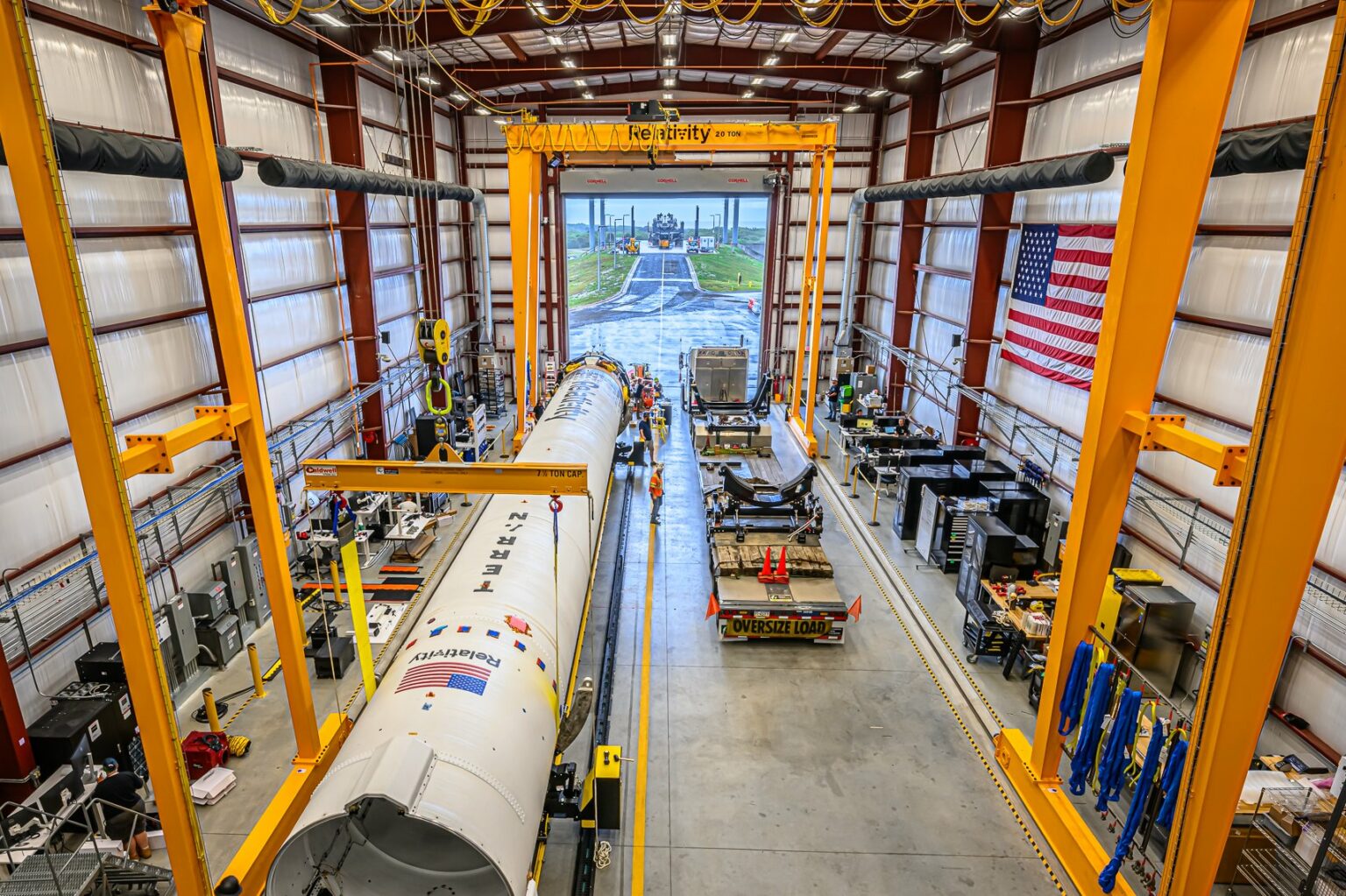Selection of the most interesting space news for the week: The Terran1 rocket, printed on a printer, was delivered to the launch pad. The NASA Ingenuity Mars helicopter received a prestigious award, and we tell how Israeli intelligence destroyed the Egyptian rocket program and Saddam’s space supergun.

Starshakes became a sensation of the third release of Gaia data
The third data release of the Gaia Space Telescope has been published. It contains data on 1.59 billion objects from asteroids to quasars. The sensation was the availability of data on the shape change of thousands of stars, which scientists call “starshaking”. The third release of data from the Gaia Space Telescope (DR3) appeared on the website of the European Space Agency (ESA). It contains data on 1.47 billion objects monitored by this tool. This time the sensation of the release was the star shakes. Among the hundreds of millions of luminaries, thousands were found that showed a change in shape during the observation. The processes inside them lead to uneven expansions and contractions. They roll over the giant star like a tsunami, which changes the parameters of its luminosity.
Astronomers caught a dead star in cannibalism
Using data from the Hubble telescope, as well as other NASA observatories, American astronomers were able to detect an unusual white dwarf, designated G238-44. The peculiarity of a dead star is that it actively absorbs rock-metal asteroids and icy bodies located at a fairly large distance from it.
Engineers start assembling the Hera device
The propulsion module of the Hera mission was successfully delivered to the assembly shop of the Italian company Avio. In the near future, specialists will begin installing fuel tanks, power units, pipelines and other elements necessary for a successful interplanetary flight.
The Hera mission was approved by ESA in 2019. It is a continuation of the DART project. Within its framework, on September 26, 2022, a NASA probe of the same name will crash into the 160-meter asteroid Dimorphos (it is a moon of the larger 780-meter asteroid Didymos).The main purpose of the operation is to check the possibility of changing the orbit of a small body by kinetic action.
Market News

Rocket printed on the printer arrived at the launch pad
The first stage of the Terran 1 rocket was successfully delivered to the hangar of the LC-16 launch complex at Cape Canaveral. In the near future, Relativity Space specialists will start preparing it for launch. Relativity Space was founded in 2015. Its management has made a bet on the creation of rockets that will be completely printed on 3D printers. According to the designers’ idea, such an innovation will radically speed up the process of building carriers, which, in turn, will significantly reduce their cost. For this purpose, the company has acquired the world’s largest printer designed for metal printing.
NASA Ingenuity Mars helicopter received a prestigious award
The engineering team behind the Ingenuity helicopter’s daring flights has received a prestigious award for the aircraft’s groundbreaking achievements on Mars. The helicopter made history in April 2021, when it became the first heavier-than-air aircraft to make a controlled flight on another planet. In recognition of its success, the National Aeronautics Association presented the NASA team with the Collier Trophy award at a ceremony in Washington, DC.
Spektr-RG: Russian scientists against Rogozin
The conflict over the eROSITA orbital telescope, which the head of Roscosmos Dmitry Rogozin is trying to turn on without authorization, is gaining momentum. A number of Russian scientists opposed him. They claim that such actions on the Spektr-RG observatory without coordination with Germany can have disastrous consequences.
Interesting
In “high-beta” seasons, like back in early May, the plane of our orbit is such that we never get shadowed by the Earth, which means that the Sun never really sets. Take a look! #MissionMinerva @esa @esaspaceflight @ESA_EO @Space_Station pic.twitter.com/2t0WrX3ib0
— Samantha Cristoforetti (@AstroSamantha) June 9, 2022
“White Nights” in orbit: ISS astronaut shared an impressive video
Astronaut of the International Space Station (ISS) Samantha Cristoforetti has published a magnificent video in which the Sun does not set at all. Italian astronaut Samantha Cristoforetti from the European Space Agency shared the footage on Twitter on June 9. “In certain seasons, for example, at the beginning of May, the plane of our orbit is such that we are never shaded by the Earth, which means that the Sun never sets for the ISS,” commented Cristoforetti.
Samples of the Ryugu asteroid turned out to be the cleanest in the Solar System
Scientists continue to study samples of the Ryugu asteroid, which are the “cleanest” parts since the formation of the Solar System. Recently, “molecules of life” have been discovered in them. Now scientists have made a new discovery. A new analysis of the Ryugu material confirms that the porous asteroid is rich in carbon and is “extremely primitive” in its composition. It is also a representative of a rare class of asteroids known as the CI-type.
“Space” special operations of the Mossad (article)
Ukraine needs its own “Mossad” so that no war criminal who has committed crimes against peaceful citizens of Ukraine have a chance to evade criminal responsibility! — it is increasingly heard in the domestic information space. However, the activities of the Israeli Secret Service were not limited to the search for Nazi war criminals, some special operations acquired literally cosmic proportions.
Read also:
Follow us on Twitter to get the most interesting space news in time
https://twitter.com/ust_magazine

